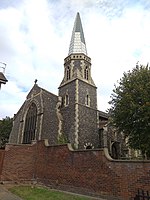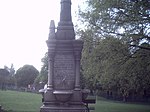Suffolk New College
2009 establishments in EnglandEducation in IpswichEducational institutions established in 2009Further education colleges in SuffolkUse British English from February 2023 ... and 1 more
Vague or ambiguous time from February 2017
Suffolk New College (formerly Suffolk College) is a further education college in Ipswich. It provides courses for students from across south Suffolk. In 2009 it constructed a new building costing £70 million.
Excerpt from the Wikipedia article Suffolk New College (License: CC BY-SA 3.0, Authors).Suffolk New College
Woodbridge Road,
Geographical coordinates (GPS) Address Nearby Places Show on map
Geographical coordinates (GPS)
| Latitude | Longitude |
|---|---|
| N 52.05542 ° | E 1.165275 ° |
Address
Woodbridge Road 155
IP4 2RA , California
England, United Kingdom
Open on Google Maps









